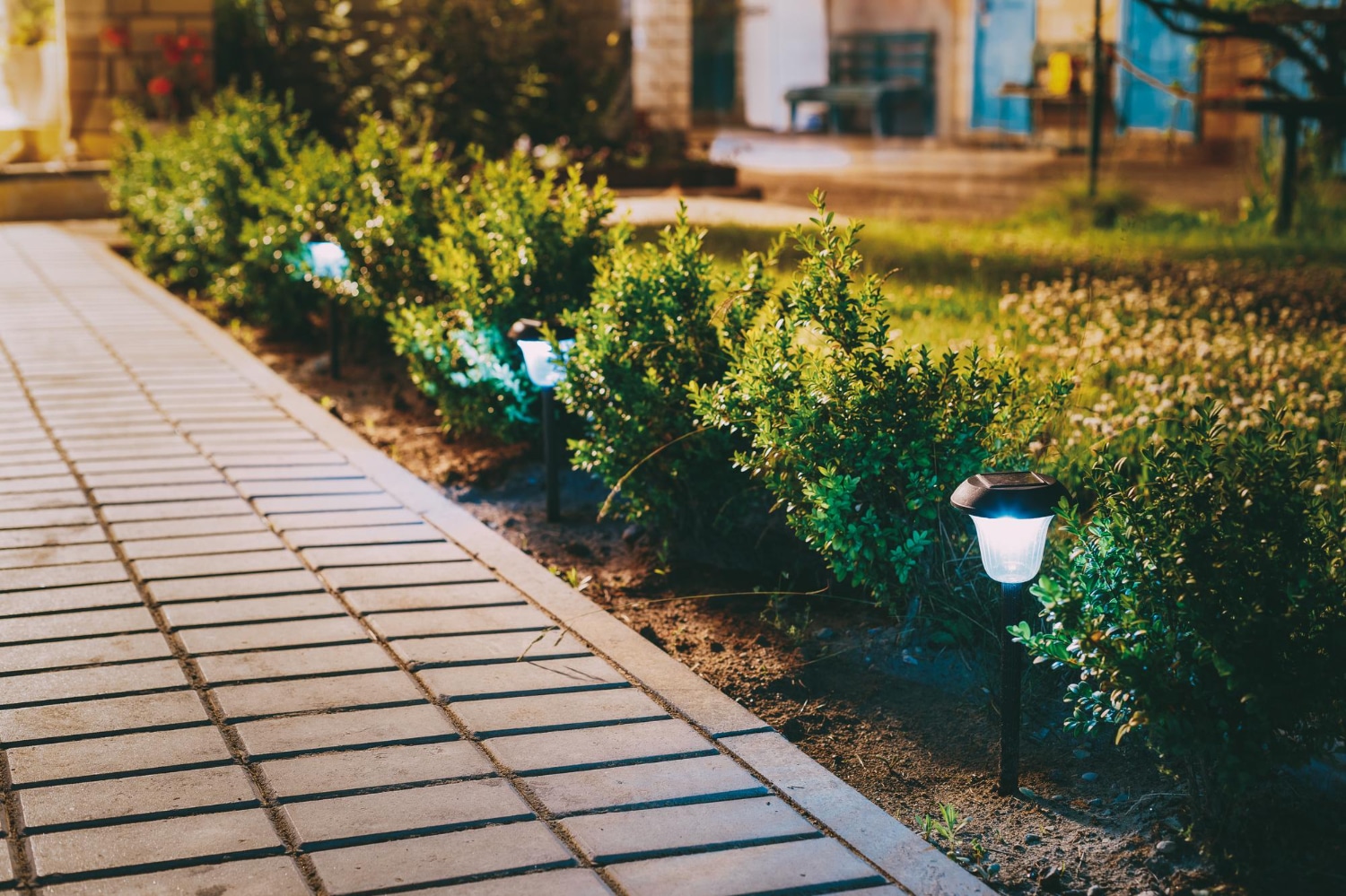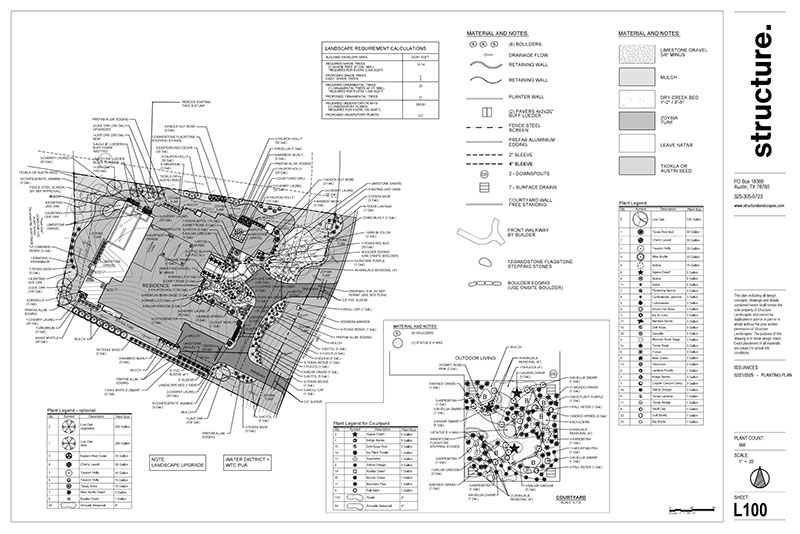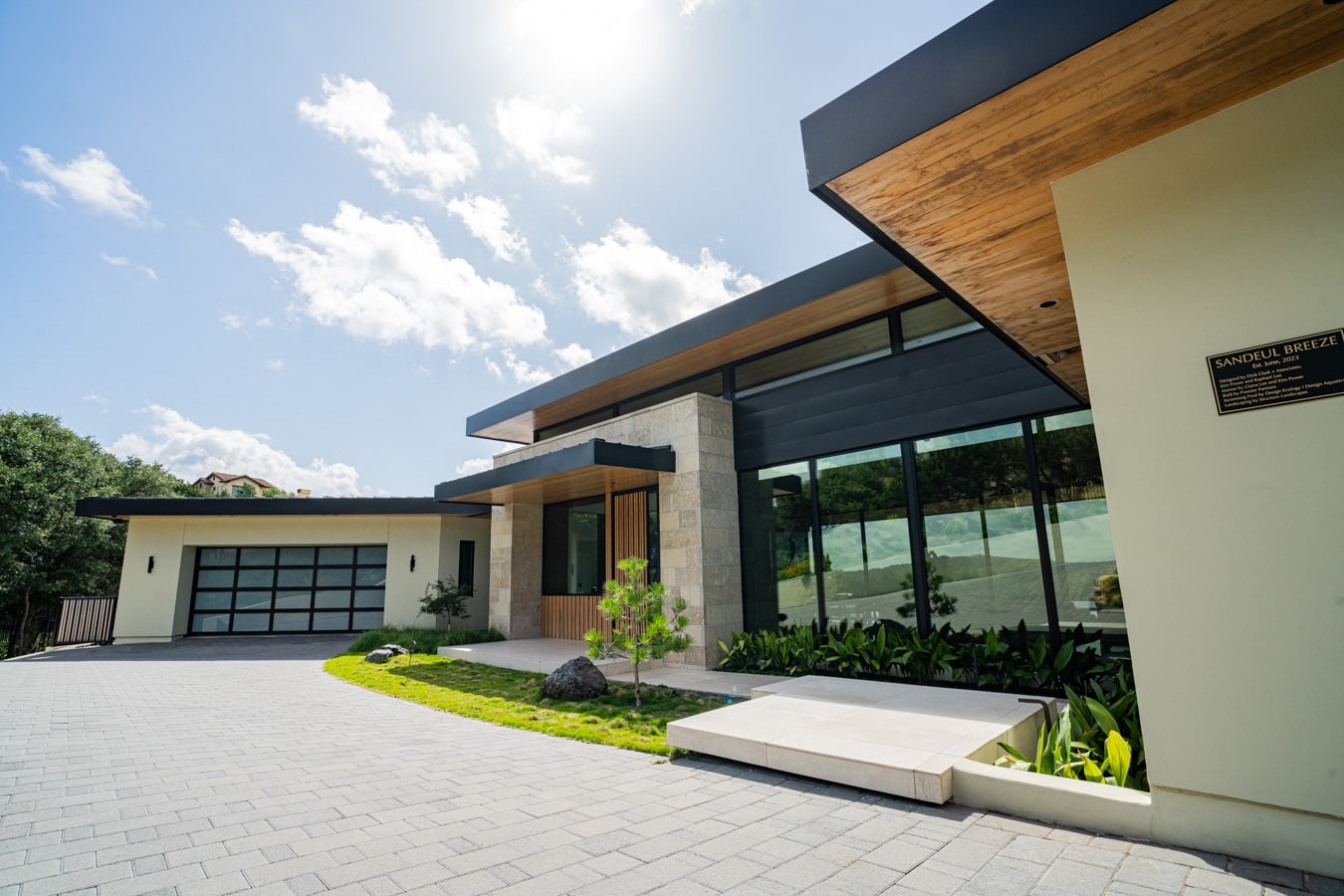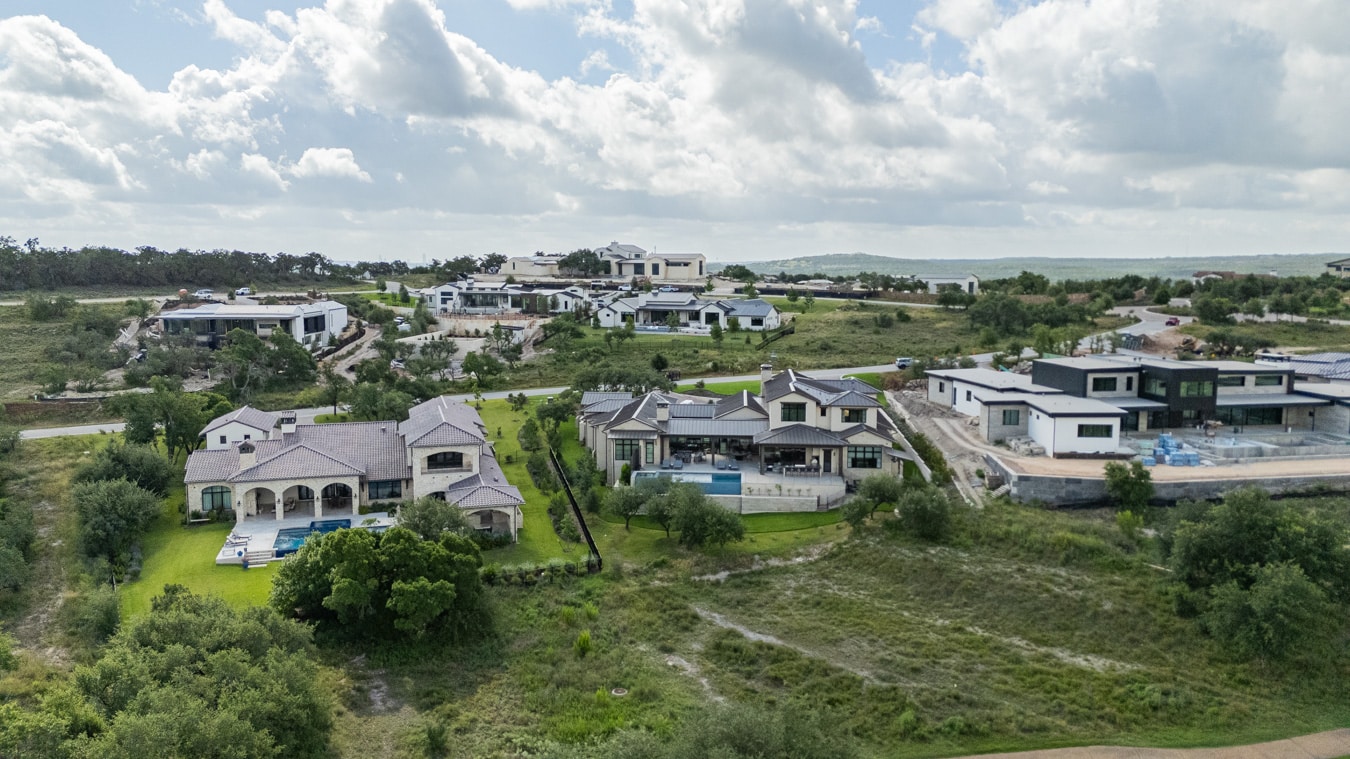Solar landscape lighting adds beauty and functionality to outdoor spaces. Plus, they’re easy to install and don’t require wiring, making them a popular choice for homeowners. Solar-powered landscape lights use energy from the sun to charge during the day and illuminate areas at night. Many options are available, from string lights to ground stakes to fence post caps. These lights come in different styles, colors, and brightness levels to suit various needs.
We’ve also seen significant improvements in solar light technology recently, and today’s models offer longer runtimes, brighter illumination, and more durability than ever before. With so many great choices on the market, it’s easier than ever to light up outdoor areas sustainably.
Fundamentals of Solar Power Landscape Lighting
Solar power landscape lighting uses the sun’s energy to light outdoor spaces. This eco-friendly option saves money and reduces carbon footprints.
Essential Solar Panel Characteristics
Solar panels are key to powering landscape lights, and converting sunlight into electricity, and most panels use silicon photovoltaic cells. Larger panels collect more sunlight, meaning more power for lights, the angle of the panels is also critical and you should aim them to catch the most sun throughout the day. Quality panels also last longer. Look for durable materials that can handle the weather. Good panels work even on cloudy days, though not as well.
Importance of Solar Energy in Landscape Lighting
Solar energy makes outdoor lighting easy and cheap to run. There’s no need for wiring or electrical work, which cuts down on installation costs. You can put solar lights almost anywhere sunny. They’re great for paths, gardens, and driveways, turning on automatically at night to save time and effort. Using solar power also helps the planet as it doesn’t create pollution like fossil fuels do. Over time, solar lights can significantly lower a home’s carbon footprint.
Design and Features of Solar Lights
Solar landscape lights come in many shapes and styles. They use the sun’s energy to light up outdoor spaces at night. Let’s look at some common types and new LED technology that makes them even better.
Different Types of Solar Lights
- Path lights are popular for lining walkways and have stakes to push into the ground.
- Spotlights are brighter and can highlight trees or buildings.
- Wall-mounted lights attach to fences or houses for safety.
- String lights add a festive touch to patios or decks. They usually have small bulbs on a long cord.
- Floating lights can decorate ponds or pools, and some look like rocks to blend in with gardens.
- Post-cap lights for deck railings fit on top of wood or metal posts.
- Lanterns give a classic look and can sit on tables or hang from hooks.
Innovations in LED Technology
LEDs have made solar lights much better as they use less power and last longer than old bulbs. This means solar lights can stay bright all night. New LEDs come in different colors, and you can now get warm white light that looks nicer than the blue-ish glow of older LEDs. Some lights also let you change colors with a remote control.
Bright solar lights are becoming more common, and you can control them with your phone. They can turn on when they sense motion, saving power, and some even connect to home systems like Alexa. New LEDs work well in cold weather, too. This makes solar lights a year-round option. The latest models are also weather-resistant, standing up to rain and snow.
Installation and Placement Strategies
Proper installation and placement are key to getting the most out of solar landscape lighting. We’ll explore effective driveways, paths, and outdoor living space strategies.
Optimizing Lighting for Driveways and Pathways
We recommend placing solar lights about 6-8 feet apart for driveways and pathways. This spacing provides even illumination without dark spots, while stake lights work well along edges. Angle the solar panels towards the south for maximum sun exposure, removing any debris or overhanging branches that could block sunlight.
Place lights on the outside of the bend for curved paths to highlight the shape, using taller lights at entrance points to create a welcoming feel. We also suggest using brighter lights for driveways to improve visibility and safety. For garden paths, softer lighting creates a more relaxed mood.
Installing Solar Lights in Outdoor Living Spaces
Decks, gazebos, and fences are great spots for solar lighting, and string lights work well for overhead lighting on decks or gazebos. Attach them securely to prevent swaying. For fences, we like using post-cap lights. They’re easy to install and provide soft ambient lighting. Space them every 2-3 posts for a balanced look.
Use a mix of task and accent lighting in seating areas, placing brighter lights near grills or dining areas. Use softer lights to highlight plants or water features. Meanwhile, wall-mounted solar lights work well on the sides of gazebos or outdoor structures. Angle them downward to reduce glare and create a relaxing atmosphere.
Advanced Features and Durability
Solar landscape lights now offer impressive features and robust construction. They can withstand harsh weather and provide added security for homes.
Waterproofing and Weather Resistance
High-quality solar lights have strong waterproof ratings like IP65 or IP67, meaning they can handle heavy rain and snow. Many use aluminum or stainless steel bodies that won’t rust. Tough polycarbonate housings also protect the inner parts.
High-quality lights work in temperatures as low as -20°F and UV-protected materials stop sun damage over time. Look for tempered glass lenses, too. These resist cracking from impacts. Sealed designs keep moisture out of the electrical parts.
Security Enhancements with Motion Sensors
Motion sensor lights add safety to your yard, turning on when they detect movement. This scares away animals and unwanted visitors. Many solar security lights have bright LEDs that can light up large areas—some offer adjustable settings for sensitivity and light duration. Look for models with wide detection angles. 180-degree sensors cover more ground. The best lights let you aim the sensor and light separately. Get in touch to discuss landscape lighting options for your home’s outdoor space.





